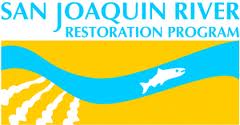 Notice from the San Joaquin River Restoration Program:
Notice from the San Joaquin River Restoration Program:
In January, Reclamation issued the first 2022 Allocation to the Restoration Program, totaling 315,297 acre-feet under a Normal-Wet year type. The Restoration Administrator, an independent body stipulated by the Settlement, recommended a Restoration Flows schedule for the entire year. This schedule has now been approved by Reclamation as being consistent with the Settlement, Restoration Flow guidelines, and applicable water rights.
This schedule includes two brief pulses in late February, followed by a steady flow through the spring which utilizes the available channel capacity. Restoration Flows decline in the summer and increase in autumn into winter coinciding with salmon reproduction, incubation, and juvenile fry emergence.
The Restoration Allocation will be updated several times between now and May, and in response the Restoration Administrator may adjust flows or add additional features to the hydrograph such as pulses or ramp-downs.
The public is encouraged to monitor flow conditions if recreating on or near the San Joaquin River. Natural storm runoff and changes to the Restoration Flow schedule may occur at any time. After months of low flows due to drought it may be tempting to underestimate the power of the river and the effects of cold water.
Any pulses from Friant Dam, such as the ones scheduled on February 24 and 25, should be monitored and caution applied if planning to be in or around the river. In the hours after the pulse releases from Friant Dam, water will rise rapidly then fall more gradually. Those in and along the river will experience a temporary rise in the river water level by 6” to 18” above the present level as well as more powerful river flows. The pulses will mellow as they move downstream, taking nearly a day to Reach Hwy 99 and nearly 2 days to reach Gravelly Ford.
The Restoration Flow schedule has now been changed to the following:
|
Date |
Friant Dam Releases |
Restoration Flows at Gravelly Ford |
|
February 20 – February 23 |
Holding at approximately 400 cfs, then rising at 11 p.m. on February 23 |
205 cfs |
|
February 24 |
A 1500 cfs pulse beginning at midnight and lasting until 11 a.m., then releases decrease and hold temporarily at 385 cfs |
205 cfs |
|
February 25 |
A 1500 cfs pulse beginning at 8 a.m. and lasting until 2 p.m., then decreasing to 400 cfs by 10 p.m. and holding at 400 cfs after 10 p.m. |
205 cfs, then rising in response to Friant Dam pulse release |
|
February 26 – 28 |
400 cfs, rising to approximately 650 cfs |
Variable flows, 300-600 cfs in response to Friant Dam pulse releases |
|
March 1 – May 20 |
Approximately 680 cfs |
420 – 430 cfs |
|
May 21 – May 28 |
680 cfs declining to |
430 cfs declining to 175 cfs |
|
May 29 – July 31 |
Approximately 440 cfs |
175 – 180 cfs |
|
August 1 – August 31 |
Approximately 460 cfs |
195 cfs |
|
September 1 – November 30 |
Approximately 470 cfs |
230 cfs |
|
December 1 – February 29, 2023 |
350 cfs |
Approximately 200 cfs |
For Information about Restoration Flows, please visit http://www.restoresjr.net/restoration-goal/restoration-flows/.
For the Restoration Administrator recommendations, please visit http://www.restoresjr.net/documentsreports/ra-recommendations/
For additional information about the San Joaquin River Restoration Program, please visit http://www.restoresjr.net or contact Josh Newcom, Public Affairs Specialist, at 916-978-5508 or snewcom@usbr.gov.


